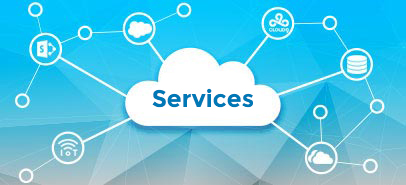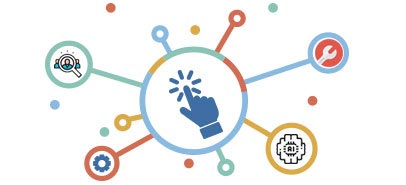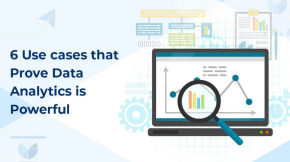Why Modernizing Apps with Azure PaaS is the Smartest Move for Your Business
In 2020, a global retail giant faced a nightmare. Their old systems couldn’t handle the pandemic’s online shopping boom. Apps crashed. Customers? Angry. IT team? Overwhelmed. Black Friday? A disaster waiting to happen. So, they moved to Azure PaaS. The result? Uptime hit 99.99%. Costs dropped 30%. Scaling during peak traffic? Smooth as butter. No drama, no chaos.
This isn’t just their story. It’s the story of businesses stuck in the past. If your systems are old, clunky, and holding you back, this is for you. You’re asking, “Can Azure PaaS services really fix my problems?” Let’s break it down. No jargon. Just the truth.
Why Modernize to Azure PaaS?
Old systems are dead-weight. They’re like driving a car from the 80s in a Formula 1 race. You can’t keep up. Modernizing isn’t just a trend—it’s survival. Here’s why Azure PaaS services is the way forward:
- Speed That Makes You Competitive
No waiting for weeks to deploy updates. No wasting time fixing bugs. PaaS Azure lets you move fast. Roll out a feature? Done in hours. Fix a glitch? It’s gone before anyone notices.
Why it matters: The market doesn’t wait. If you’re slow, someone else takes your customers.
- Scale Without Stress
Your app gets hit with traffic. Maybe a sale, maybe a viral post. PaaS on Azure handles it. Automatically. No manual tweaking. No crashes. The system adjusts itself to fit your needs.
Example: Imagine running an app that handles 10,000 users today. Tomorrow, 1 million show up. Azure doesn’t panic. It scales.
- Security On Autopilot
Cyberattacks are everywhere. Data breaches? Costly. Azure comes with built-in tools: encryption, firewalls, identity management. It’s like having a 24/7 bodyguard for your apps and data.
Why this matters: Hackers are smarter. You don’t need to be. Azure’s got you covered.
- Save Money, Not Just Time
Pay for what you use. Not more, not less. No overspending on hardware you don’t need. Azure PaaS services optimizes everything. Businesses have cut infrastructure costs by 30-40%.
Real talk: Why keep burning money on stuff you don’t need?
- Get to Market Faster
Azure has pre-built tools and services. That means less time building from scratch. Developers can focus on creating, not managing.
Why it matters: Launching fast means you stay ahead of competitors. Every delay is a missed opportunity.
Key Azure PaaS Tools You Need
Modernizing isn’t about just moving your app. It’s about using the right tools. Azure has plenty. Here are the ones that can change the game for you:
- Azure App Service
This is your app’s new home. It’s fully managed. Build, deploy, and scale without breaking a sweat.
Use it for: Web apps, APIs, mobile backends.
Why it’s great: Auto-scaling, built-in CI/CD pipelines, zero downtime during updates.
- Azure Functions
Tiny pieces of code that run when something happens. No need to think about servers.
Use it for: Things like payment processing or sending notifications.
Why it’s great: You only pay when the code runs. No idle costs.
- Azure SQL Database
A relational database that manages itself.
Use it for: Storing structured data (sales, customer data, etc.).
Why it’s great: Automatic backups, scaling, and top-notch security.
- Azure Cosmos DB
A database for unstructured data. Think IoT, social media posts, and more.
Use it for: Apps that need global reach.
Why it’s great: Multi-region replication for speed and reliability.
- Azure API Management
Control who accesses your APIs. Monitor usage. Secure them.
Use it for: Exposing APIs to internal or external users.
Why it’s great: Analytics, traffic control, and built-in security.
Real-Life Transformation: Modernizing a Three-Tier App
Let’s say you’ve got a three-tier app. You’ve got the frontend, backend, and database. Here’s how it looks now:
Old Setup:
Frontend: A web server running on IIS.
Backend: Monolithic logic sitting on another IIS server.
Database: SQL Server on a physical machine.
It works. Barely. It’s slow. It crashes. Your IT team hates it.
New Setup with PaaS on Azure:
Frontend: Move to Azure App Service.
Backend: Break it into microservices and use Azure Functions.
Database: Migrate to Azure SQL Database (or Managed Instance).
Result:
Your app is faster, scales automatically, and costs less to run.
Steps to Modernize
This isn’t a magic wand. You need a plan. Here’s how to get it done:
- Start with the Database
Move your SQL Server to Azure SQL Managed Instance.
Secure it with private endpoints and encryption.
- Fix the Backend
Break your monolithic app into smaller services.
Use Azure Functions or Azure App Service to host them.
- Tackle the Frontend
Deploy it to Azure App Service.
Add SSL/TLS for security.
- Automate Everything
Use Infrastructure as Code tools like Terraform.
Set up CI/CD pipelines with Azure DevOps.
- Test, Test, Test
Don’t assume it works. Test every part before going live.
Why This Works?
This isn’t just theory. It works. When you modernize with PaaS on Azure, here’s what you get:
| Benefit |
Why It Matters |
| Scalability |
Adjusts automatically. No crashes. |
| Security |
Built-in tools mean fewer risks. |
| Lower Costs |
Pay only for what you use. |
| Faster Deployment |
Updates and features roll out quickly. |
| Less Stress |
IT teams spend less time firefighting, and more time innovating. |
Final Thoughts
This isn’t optional anymore. Legacy systems are slowing you down. They’re expensive, insecure, and unreliable. PaaS Azure fixes all of that.
Start small. Pick one app. Follow the steps. See the results. Once you see how much easier life gets, you’ll want to do it for everything.
The future isn’t about keeping up. It’s about staying ahead. And PaaS Azure? It’s your ticket.












